Continental Divide Trail Resupply Guide (2021 Survey)
After researching your Continental Divide Trail gear, the question many aspiring thru-hikers move to is that of CDT resupply.
What is CDT resupply? It’s the replenishment of the food (and other consumable items) carried in a hiker’s backpack. Contrary to popular belief, hikers of the Trail of Continental Divide must leave the trail and venture into town to buy more food. They don’t just carry all their food from the beginning. And, perhaps even more shockingly, the idea that thru-hikers subsist on a diet of foraged mushrooms and edible plants is a lie.
I often advise hikers not to worry about resupply before beginning a thru-hike, but I am not always believed. Barring any dietary restrictions or a tight resupply schedule (i.e. you’re on a CDT speed run), there’s little reason to stress about where you’re going to buy food in Colorado in a couple of months. The Continental Divide Trail runs society adjacent and it isn’t difficult to get yourself to somewhere where you can pause and organize yourself and your hike.
Using data from the 2021 Continental Divide Trail Hiker Survey, I’ve compiled the following picture of what resupply looks like over the course of a Continental Divide Trail thru-hike. Hopefully, this helps all you would-be CDT thru-hikers rest a little easier.

Notes on the data
- This year’s survey boasts the most-ever respondents with 216 completed surveys – a 23% increase vs the previous high.
- I use mileage from the FarOut Guides app (I highly suggest downloading this app if you’re planning to hike the CDT)
- For stats requiring the length of the CDT for a calculation (e.g. mileage/day), I use 3,100 mi / 4,989 km.
- Some responses are sorted and colored to make the data friendlier (e.g. northbound vs. southbound).
- I ask that respondents do their best to accurately respond to the survey. Not every person answers every question and not every answer is guaranteed to be 100% accurate.
- I refer to survey respondents collectively as this year’s “class“. Remember, this is a sample and not a comprehensive survey of every person on the CDT.
- This survey does invoke some math. I suggest you familiarize yourself with the words average, median (M), and standard deviation (σ).
- More detailed posts focused on CDT Gear, CDT Horror Stories, and CDT Advice in the coming weeks. If you would like to be notified of new surveys, click here.
Labels differentiating hiker segments:
- THRU: Thru-hikers (all)
- THRU-1: Thru-hikers who completed the entire CDT
- NOBO: Northbound thru-hikers (all)
- NOBO-1: Northbound thru-hikers who completed the CDT
- SOBO: Southbound thru-hikers (all)
- SOBO-1: Southbound thru-hikers who completed the CDT
If no label has been appended to a data point, then I used all data collected (i.e. it also includes section hiker data).
Resupply Strategy
When you find yourself in town along the Continental Divide Trail, you have the following options in terms of your resupply:
- Buy yourself a full resupply (replenish your food stocks from zero back to a level sufficient to get you to the next resupply point)
- Buy yourself a partial resupply (boost your current stock to get you through to the next resupply point – i.e. get more snacks)
- Pick up a package from a post office or hiker-friendly place along the trail (like a hotel or trail angel) that you’ve sent ahead to yourself.
- Get yourself a large enough meal to hold yourself over until the next town (some hikers are fond of doing this at the Cajon Pass McDonald’s).
- Skip the town completely and crush miles to your next resupply.
Sometimes your options are limited to a gas station or a very expensive general store (which is where some hikers may prefer to send themselves packages). Other times, you’ll find yourself in a large town with a supermarket (this is a good place to get a resupply to send ahead somewhere).
Before delving into the “best” strategy for CDT resupply, I must warn you (again) to not fall into the trap of attempting to plan your entire hike ahead of time. It (probably) is not going to work (although I’ve been proven wrong in the past).
Unless you have very specific dietary restrictions or some very compelling reason, there are few reasons for you to plan your resupply stops ahead of time. It’s like worrying about how you’re going to get home when you reach the northern/southern terminus; it doesn’t matter to you who has yet to walk a single step. There will be plenty of time on the trail to figure out your resupply, trust me (I’m an internet stranger, so you basically have to).
With this in mind, let’s take a look at the CDT Class of 2021’s resupply.
Number of resupply boxes sent
- 2.2% Mailed all resupplies
- 9.4% Mailed most resupplies (> 50%)
- 54.4% Mailed some resupplies (10-50%)
- 25% Mailed a few resupplies (1-10%)
- 8.9% Mailed no resupplies

2021 THRU
- 2.2% Mailed all resupplies
- 9.4% Mailed most resupplies (> 50%)
- 54.4% Mailed some resupplies (10-50%)
- 25% Mailed a few resupplies (1-10%)
- 8.9% Mailed no resupplies
2020 THRU
- 2.7% Mailed all resupplies
- 10.2% Mailed most resupplies (> 50%)
- 48.4% Mailed some resupplies (10-50%)
- 30.2% Mailed a few resupplies (1-10%)
- 8.4% Mailed no resupplies
As with most years (every year), the vast majority of hikers split their resupplies between buying locally and sending resupply boxes ahead.
Resupply Boxes
Buying your food and prepping boxes before your hike can be tempting for the first-time thru-hiker (or even the experienced, but uncertain thru-hiker). A certain (false) sense of security comes from packing your resupply before the trail – a kind of “well, I’ve got all that sorted out”. Except on the trail, all of that sorting out you did ahead of time can prove more a liability than an asset.
Plans change, post offices aren’t always open, boxes get lost, hikes end early – a lot can happen between your start date and the resupply box you hoped to retrieve weeks or months later.
On top of all that, unless you’ve done a long-distance hike before (and based on the statistics from the CDT Survey – you probably haven’t), it can be hard to imagine what you, in a month (or two…or three…), is going to want to eat all day after having hiked hundreds of miles.
But since practically all hikers send at least some boxes, let’s examine how many boxes were sent, how many were prepped ahead of time, how frequently they were sent, and what was done before starting vs. on the trail.
Number of Resupply Boxes
This is a chart of the total number of resupply boxes by thru-hikers who completed the entire Continental Divide Trail.
Average: 6.1
Median: 5
σ: 5.7

Number of Resupply Boxes Prepared Pre-Trail
As part of CDT resupply planning, many hikers prepare resupply boxes ahead of time. Here are the stats for the number of boxes that thru-hikers prepared before setting foot on the trail.
Average: 4.8
Median: 3
σ: 6.4
Note: You can buy and prepare resupply boxes from on the trail; you don’t need all of your boxes ready before you even begin your hike.
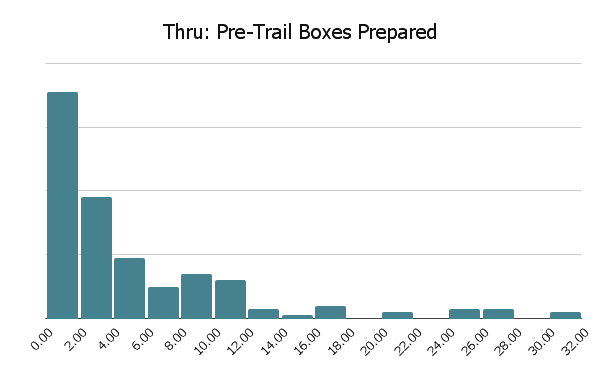
THRU
17.6%
The percentage of hikers who said they would have liked to have sent fewer resupply boxes during a thru-hike
THRU
8.7
The average number of resupply boxes sent by hikers who said they would have liked to have sent fewer resupply boxes
THRU
5%
The percentage of hikers who said they would have liked to have prepared no resupply boxes before beginning their thru-hikes
THRU
8.8%
The percentage of hikers who said they would have liked to have sent more resupply boxes during a thru-hike
THRU
4.8
The average number of resupply boxes sent by hikers who said they would have liked to have sent more resupply boxes
THRU
1.1%
The percentage of hikers who said they would have liked to have prepared all their resupply boxes before beginning their thru-hikes
This year’s average number of boxes sent was 6.1, the median was 5, people who sent 4.8 wanted to send more, and people who sent over 8.7 wanted to send fewer. Sounds like the average of 6 is just what this year’s class wanted.
Remember, there is no “correct number of CDT resupply boxes”, but there are most-definitely places where a prepackaged and curated selection of your preferences will be preferable to the local selection.
Where to Mail CDT Resupply Boxes
As part of the CDT Survey, I ask hikers where they definitely recommend sending a resupply box. Hikers’ motivations for sending a resupply box to a location on the trail can range from “the selection is bad and everything is expensive” to “the owners of the store are awful people and we should not support them”. Regardless of their reasons, here’s where the CDT Class of 2021 thinks you should send yourself resupply boxes.
In case there’s any confusion, the locations are listed in descending order (not geographical order). The percentages reflect the percentage of this year’s class who indicated that they would “definitely send a resupply box” to each location. And remember, this year’s class agreed upon sending six resupply boxes; I’ve included 10 to give you options (because, you know, hike your own hike, etc).
- Pie Town (New Mexico) 76%
- Doc Campbell’s (New Mexico) 43%
- Encampment/Battle Pass (Wyoming) 29%
- East Glacier Village (Montana) 24%
- Benchmark Wilderness Ranch (Montana) 23%
- Old Faithful Village/Yellowstone (Wyoming) 22%
- Ghost Ranch (New Mexico) 18%
- Twin Lakes (Colorado) 15%
- Leadore/Bannock Pass (Idaho) 11%
- Lima (Idaho) 11%
*This is the second year in a row Pie Town has been (overwhelmingly) at the top of the list.
Many hikers fail to realize that you can easily send yourself boxes from towns on the trail (instead of having to prepare your boxes ahead of time). You are not committed to the plan you have on the first day you set foot on the trail.
The CDT is long. But it simply connects a series of smaller trails between resupply stops. Nothing is stopping you from going to a supermarket, buying yourself delicious hiker food, and mailing it to yourself further up the trail (unless it’s Sunday because the post office is closed on Sunday – which may sound unimportant now, but will be an important thing to remember whilst on the trail).
For the sake of simplicity, let’s suppose you’re strictly following the advice of this year’s CDT class. The number of resupply boxes that you will be sending to each section of the CDT is:
- New Mexico: 3 (Doc Campbell’s, Pie Town, Ghost Ranch)
- Colorado: 1 (Twin Lakes)
- Wyoming: 2 (Encampment/Battle Pass, Old Faithful Village)
- Idaho/Montana: 4 (East Glacier Village, Benchmark Wilderness Ranch, Leadore/Bannock Pass, Lima)
Changes to CDT Resupply Strategy
To help future Continental Divide Trail hikers figure out a successful CDT resupply strategy, I ask hikers what they would have changed as far as resupply. Here are the top responses from what this year’s CDT class would like to have changed in terms of resupply:
- 20.9% – Include more variety in their resupplies (Clif bars and Stroopwafels will only get you so far)
- 19.8% – Include healthier food in their resupplies (yes, you can survive on M&M’s – but should you?)
- 17.6% – Send fewer resupply boxes over the course of the trail (9.3 was the average number of boxes sent by hikers who said this)
- 14.3% – Mail resupply boxes from on the trail instead of ahead of time
- 12.1% – Include less food in their resupplies (the challenge of how much food to buy remains constant over the course of the trail)
- 8.8% – Send more resupply boxes over the course of the trail (7 was the average number of boxes sent by hikers who said this)
- 5% – Prepare no resupply boxes ahead of time
- 4.4% – Resupply more frequently (more frequent resupplies means less weight carried – but also more time in town)
- 3.9% – Send more food in their resupplies
- 2.2% – Resupply less frequently (less frequent means longer distance between resupplies)
- 1.1% – Prep all their resupply boxes ahead of time

Favorite Hiker Meals & Snacks
Another big consideration of Continental Divide Trail resupply? What food you are going to be resupplying with.
I would love to eat a Costco-sized bag of M&M’s with a large brick of cheese and a bottle of Sriracha for each section of trail, but I’ve been told this isn’t healthy (and nearly 20% of CDT hikers said they wish they had resupplied with healthier food). So what do CDT hikers eat? Berries, insects, dirt, fallen CDT hikers? Obviously. But there’s so much more on offer at (most of the) CDT resupply stops.
Here are this year’s favorite (and least favorite) dehydrated meals and backpacking snacks.
Favorite Backpacking Meals
- Backpacker’s Pantry 17%
- Mountain House 15%
- Knorr Rice Sides 14%
- Good To-Go 10%
- Peak Refuel 8%
Favorite Backpacking Snacks
- M&M’s 24%
- Snickers Bars 23%
- Potato Chips 21%
- Honey Stinger Waffles 18%
- Pop-Tarts 14%
- Bobo’s Oat Bars 12%
- Larabars 12%
- Beef Jerky 12%
- Almonds 11%
- Peanut Butter 11%
How Frequently to Resupply
Predicting (with any degree of accuracy) where you will resupply before beginning a thru-hike, is something a lot of hikers attempt to do despite my telling them it’s not necessary. Do you know how long it’s going to take you to walk 100 mi / 160 km two months into your hike with three days of unscheduled rain and too much food in your pack?
The weather, your physical condition, the people you’re with, where you’ve just come from, where you’re going, and so many other factors make this a (somewhat) educated guess at best.
Maybe you’re going to prefer carrying more food and resupplying less often. Maybe you’re going to prefer a lighter load with more frequent stops in town. Maybe you’re going to be injured or quit in the first week (or die) and none of this will even matter.
So what’s the right balance between resupply and hiking? It’s different for everyone. A response that many of you may not want to hear, but also the most accurate response I can offer you. That said, here’s a look at what this year’s hikes looked like in terms of resupply.
THRU-1
143
The average number of days it took hikers to complete the CDT
(M = 144 | σ = 23)
THRU-1
18
The average number of zero days taken during a thru-hike
(M = 17 | σ = 10)
THRU-1
14
The average number of nearo days (low mileage days)
(M = 12 | σ = 11)
Length of Each Section
- 41 (NOBO-1) – Average days to complete New Mexico
- 46 (NOBO-1) – Average days to complete Colorado
- 29 (NOBO-1) – Average days to complete Wyoming
- 35 (NOBO-1) – Average days to complete Idaho/Montana
- 150 (NOBO-1) – Average days to complete the CDT

Length of Each Section
- 41 (SOBO-1) – Average days to complete Idaho/Montana
- 28 (SOBO-1) – Average days to complete Wyoming
- 33 (SOBO-1) – Average days to complete Colorado
- 32 (SOBO-1) – Average days to complete New Mexico
- 132 (SOBO-1) – Average days to complete the CDT

THRU-1
26.9
The average number of resupplies during a thru-hike
(M = 27 | σ = 5)
THRU-1
5.5
The average number of days between resupplies
(M = 5.2 | σ = 1.8)
THRU-1
123.1
The average number of miles between resupplies (198.1 km)
(M = 116.7 mi / 187.8 km | σ = 36.1 mi / 58.1 km)
Average Resupplies Per Section
- 7.3 New Mexico
- 8.2 Colorado
- 5.7 Wyoming
- 8.4 Idaho/Montana

Stretches between resupply can vary greatly – especially depending on which alternates you take – and some will be a lot longer (or shorter) than others. That said, this should give you a rough idea of what to expect out there.
Average CDT Resupply Plan
Based on survey responses we can piece together what an “average” Continental Divide Trail hiker’s resupply looked like for a 2021 thru-hike. Below is a list of all the CDT resupply stops where hikers stopped this year accompanied by the percentage of hikers who stopped at each location.
Resupply stops are listed in geographical order from Mexico to Canada (that’s south to north in case you’re unsure) and, again, I use the following colors to indicate each resupply stop’s popularity: OVER 75%, 50-75%, 25-50%, LESS THAN 25%.
NEW MEXICO RESUPPLY
- Lordsburg (95%)
- Columbus (0%)
- Deming (0.6%)
- Silver City (94%)
- Doc Campbell’s (94%)*
- Truth or Consequences (0.6%)
- Reserve (7%)
- Davila Ranch (1%)
- Pie Town (92%)*
- Quemado (2%)
- Grants (94%)
- Albuquerque (6%)
- Cuba (91%)
- Santa Fe (13%)
- Ghost Ranch (22%)*
- Abiquiu (3%)
- Taos (4%)
- Chama via Cumbres Pass (94%)
COLORADO RESUPPLY
- Pagosa Springs via Wolf Creek Pass (77%)
- South Fork via Wolf Creek Pass (11%)
- Platoro (8%)
- Del Norte (7%)
- Creede (37%)
- Silverton via Stony Pass (23%)
- Durango (4%)
- Lake City via Spring Creek Pass (49%)
- Monarch Mountain Lodge via Monarch Pass (14%)
- Salida via Monarch Pass (83%)
- Buena Vista (10%)
- Twin Lakes (67%)*
- Leadville (62%)
- Copper Mountain (11%)
- Breckenridge (32%)
- Frisco (29%)
- Silverthorne (20%)
- Dillon (21%)
- Idaho Springs (1%)
- Winter Park (33%)
- Fraser (9%)
- Denver (10%)
- Grand Lake (85%)
- Steamboat Springs via Rabbit Ears Pass (94%)
WYOMING RESUPPLY
- Encampment via Battle Pass (45%)*
- Riverside via Battle Pass (14%)
- Rawlins (97%)
- South Pass City (19%)
- Atlantic City (14%)
- Lander (75%)
- Pinedale (63%)
- Lava Mountain Lodge via Togwotee Pass (0%)
- Dubois via Togwotee Pass (68%)
- Jackson via Togwotee Pass (22%)
- Brooks Lake Lodge (12%)
- Cody (7%)
- Grant Village in Yellowstone (26%)
- Old Faithful Village in Yellowstone (59%)
- Mammoth Village in Yellowstone (17%)
IDAHO/MONTANA RESUPPLY
- West Yellowstone (19%)
- Island Park / Mack’s Inn (8%)
- Big Sky (11%)
- Ennis (3%)
- Lima (18%)*
- Leadore via Bannock Pass (15%)*
- Tendoy (1%)
- Salmon (5%)
- Jackson (7%)
- Darby via Lost Trail Pass (7%)
- Hamilton via Lost Trail Pass (1%)
- Wisdom (8%)
- Wise River (2%)
- Anaconda (23%)
- Whitehall (3%)
- Butte (66%)
- Bozeman (26%)
- Helena (87%)
- Elliston (4%)
- Lincoln (68%)
- Benchmark Wilderness Ranch (27%)*
- Augusta (56%)
- East Glacier Village (95%)
- Kalispell (2%)
- Two Medicine (17%)
- St Mary (0%)
- Many Glacier (32%)
- West Glacier (0%)
*Resupply stops where hikers suggest sending a resupply box.
Based on this information, how would our average Continental Divide Trail thru-hiker have used these 26.9 resupply stops (we’ll round up to 27)? It would resemble the following (note: names in bold indicate locations where hikers suggest mailing a resupply box).
NEW MEXICO
- Mile 84: Lordsburg
- Mile 158: Silver City
- Mile 38 of Gila Alternate: Doc Campbell’s
- Mile 415: Pie Town
- Mile 525: Grants
- Mile 629: Cuba
- Mile 689: Chama via Cumbres Pass
COLORADO
- Mile 847: Pagosa Springs via Wolf Creek Pass
- Mile 961: Lake City via Spring Creek Pass
- Mile 1061: Salida via Monarch Pass
- Mile 1144: Twin Lakes
- Mile 1181: Leadville
- Mile 1216: Breckenridge
- Mile 1290: Winter Park
- Mile 1436: Steamboat Springs via Rabbit Ears Pass
WYOMING
- Mile 1520: Encampment via Battle Pass
- Mile 1602: Rawlins
- Mile 1722: Lander
- Mile 1799: Pinedale
- Mile 16.1 of Old CDT Alt: Dubois via Togwotee Pass
- Mile 1988: Old Faithful Village in Yellowstone
IDAHO/MONTANA
- Mile 27 of Anaconda Cutoff: Anaconda
- Mile 2518: Butte
- Mile 2618: Helena
- Mile 2686: Lincoln
- Mile 2744: Augusta
- Mile 2877: East Glacier Village
NOTE THAT THIS IS NOT NECESSARILY A GOOD (OR EVEN DECENT) RESUPPLY STRATEGY.
Between many resupply stops, you may pass a location where you can get a meal (Cuba in New Mexico, for example) or a place where you can buy some snacks (Monarch Pass in Colorado, for example). Remember that this post is meant as a tool to gently guide you towards a more successful resupply plan (whatever that means – since, as I’ve already told you, planning resupplies is not a great investment of your time).
Favorite (and least favorite) resupply stops
The Continental Divide Trail is mostly about hiking (the worst), but the towns along the trail also play a role in the CDT experience. This is why I ask hikers’ favorite and least favorite resupply points. Take note that when asking this question I specify “‘Favorite/Least Favorite’ means where [hikers] most/least enjoyed, not where had the best/worst resupply options (although these could be the same).”
Here’s what we came up with (for each section).
FAVORITE RESUPPLY STOP
Silver City, NM
LEAST FAVORITE RESUPPLY STOP
Cuba, NM
FAVORITE RESUPPLY STOPS
- New Mexico: Silver City (40%)
- Colorado: Leadville (26%)
- Wyoming: Lander (31%)
- Idaho/Montana: Helena (19%)
RUNNERS-UP
- New Mexico: Doc Campbell’s (20%)
- Colorado: Salida (25%)
- Wyoming: Pinedale (22%)
- Idaho/Montana: East Glacier Village (16%)
LEAST FAVORITE RESUPPLY STOPS
- New Mexico: Cuba (29%)
- Colorado: Grand Lake (8%)
- Wyoming: Encampment (15%)
- Idaho/Montana: Leadore (12%)
RUNNERS-UP
- New Mexico: Lordsburg (28%)
- Colorado: Breckenridge (7%)
- Wyoming: Rawlins (13%)
- Idaho/Montana: East Glacier Village (11%)
Hitchhiking to Town
What about hitchhiking to resupply stops? You may not realize it, but hitchhiking plays a big role on the Continental Divide Trail. It’s not unusual (and is quite common) for hikers to hitchhike into town to buy or pick up their resupplies.
As part of the CDT Survey, I ask hikers what resupply stops (if any) they had difficulty hitchhiking to from the trail. The top responses were (from south to north).
Difficult Hitches
- Chama via Cumbres Pass (New Mexico) 14%
- Dubois via Togwotee Pass (Wyoming) 10%
- Lake City via Spring Creek Pass (Colorado) 8%
- Encampment via Battle Pass (Wyoming) 8%
- Augusta (Montana) 7%
- Pinedale (Wyoming) 6%
- Lincoln (Montana) 5%
- Pagosa Springs via Wolf Creek Pass (Colorado) 5%
- Grant Village (Wyoming) 5%
- Lander (Wyoming) 5%
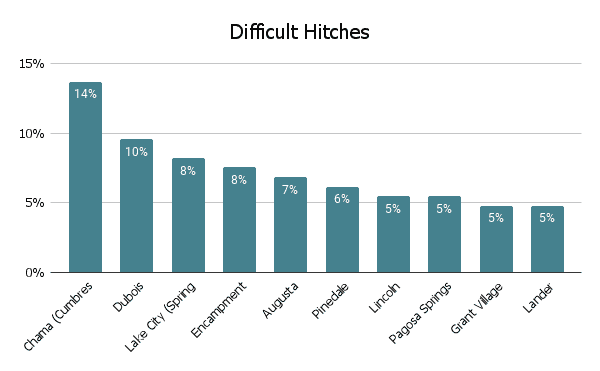
Remember, hitchhiking can be a very subjective/random experience. It may be you get a ride with the first car past at a place where others stand waiting for hours. Don’t start crying if nobody picks you up after an hour, don’t flip off cars who don’t pick you up, and don’t hate on people who have saved up enough to call an Uber.
Resupply Advice
We’ve covered a lot thus far, but enough with the numbers, colored labels, and bulleted lists of places you may or may not have ever heard of. What did thru-hikers have to say about Continental Divide Trail resupply?
- Always pack a surprise food item to keep you happy.
- Check expiration dates! Especially in towns where options seem scarce – there is probably a reason you’re lucky enough to get the last pack of tortillas or block of cheese ;)
- Be flexible, don’t be afraid to mix and match! You can always change your strategy as you go.
- If possible send resupply to places like hotels or hostels, not the post office.
- Focus on variety and taste. Your diet will be limited, so try to only have one type of each meal each resupply (i.e. don’t plan for three ramen meals in a resupply). This can help prevent burnout on certain foods. Also, get at least one food item each resupply that’s just for you to enjoy and not think about calories or weight. Eating can easily become a chore that you put off if you’re not into what you have.
- Don’t repackage your food two months before you need it. It will go stale!
- This was my first thru-hike. I wished I sent more boxes because a lot of the food in some of these smaller towns sucks. I remember getting to Lordsburg and being pissed at the selection wishing I had sent a box with healthier foods.
- Pack and mail your resupply boxes from on trail, and don’t do it too far in advance. Many hikers (not me) sent boxes to Leadore and Lima too early and then didn’t end up going because of fires.
- Bring lots of money, and if you’re plant-based, SEND BOXES.
- Even after my PCT hike I still bought food beforehand that I didn’t end up loving. So I recommend not buying any food beforehand and just buying what you feel in the moment, and if you need to send a box then you can send it from a decently stocked town a section or two before.
- Hiker boxes are rare so it’s hard to supplement limited options or ditch overpacked boxes. You could hike this trail without boxes if you are not picky. Pie Town, Leadore, Lima, and East Glacier are the only ones I would send again.
- It’s all about the cheese. Not that $3 mild cheddar block, but that gourmet $8.
- Resupply towns on the CDT were generally farther from the trail than the PCT, so resupplying took longer.
But most of all – have fun out there! And don’t die.
Support the Survey
Every year, I get a lot of people asking how to support the surveys. Beyond sharing them with your close-knit bubble of weird hiker friends, the best way to support the survey is to contribute via Patreon. You’ll get access to exclusive posts, discount codes, live streams, and super, extra cool stickers so that everyone will know how cool you are.
If you’re not into Patreon, that’s cool; you can Venmo @halfwayanywhere, Cash app $halfwayanywhere, or PayPal moc.erehwynayawflah@tcatnoc
This is not expected. The data collected in the survey will always be free and accessible to everyone who wants/needs it. Your support is much appreciated and helps pay the website (and survey) bills.



CDT Survey Collection
If there is anything you can think of that would make this information more useful (or any more resupply-related cross-referencing you would like to see), then please leave a comment and let me know.
For more on CDT Resupply, check out these posts.
Affiliate Disclosure: This page may contain affiliate links, which means I may receive small commissions for purchases made via these links at no additional cost to you. This helps pay the bills and keep the site up and running. Thank you for your support!
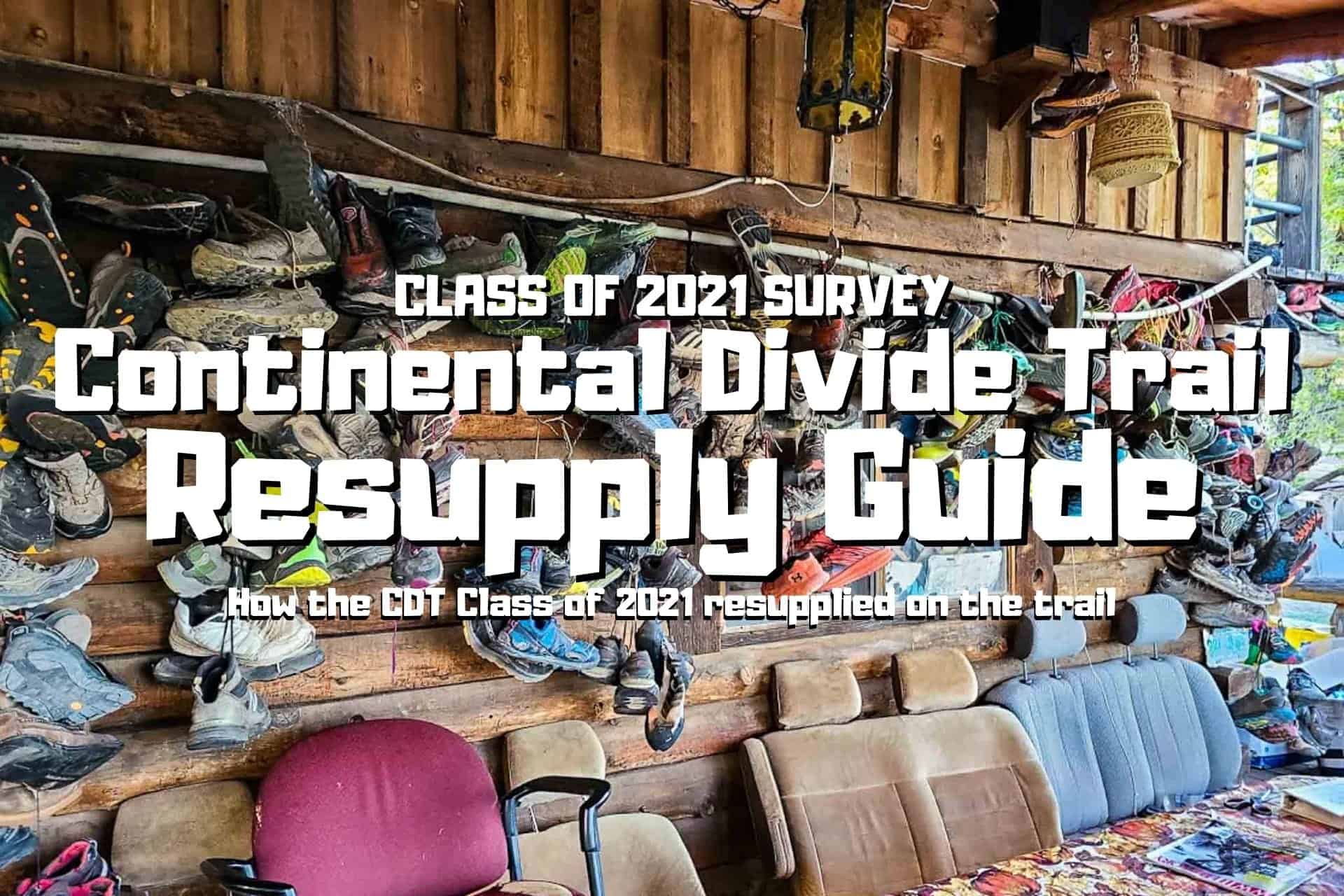
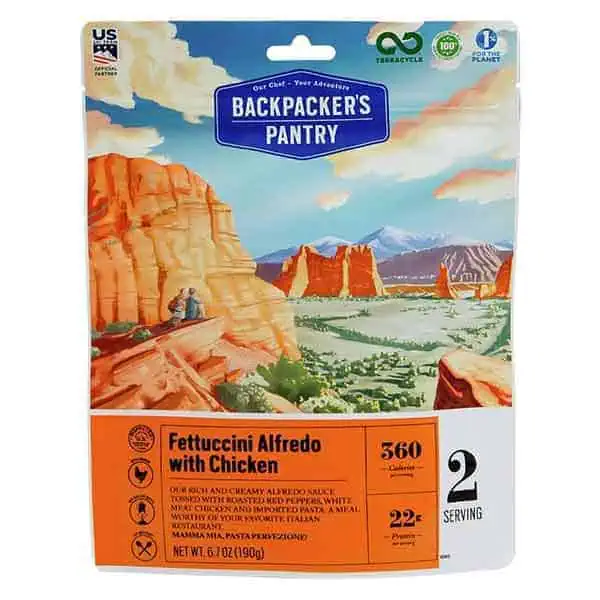

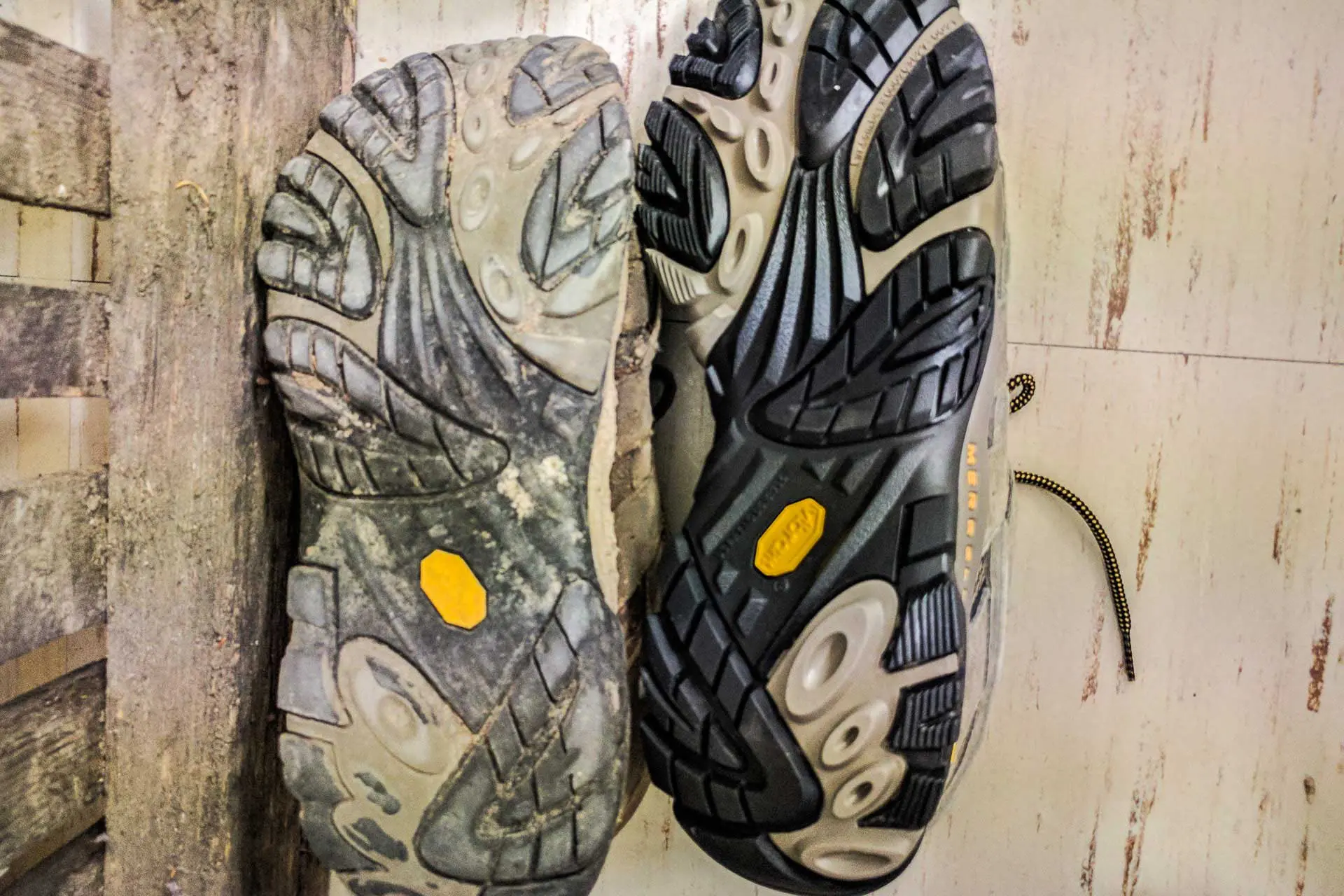


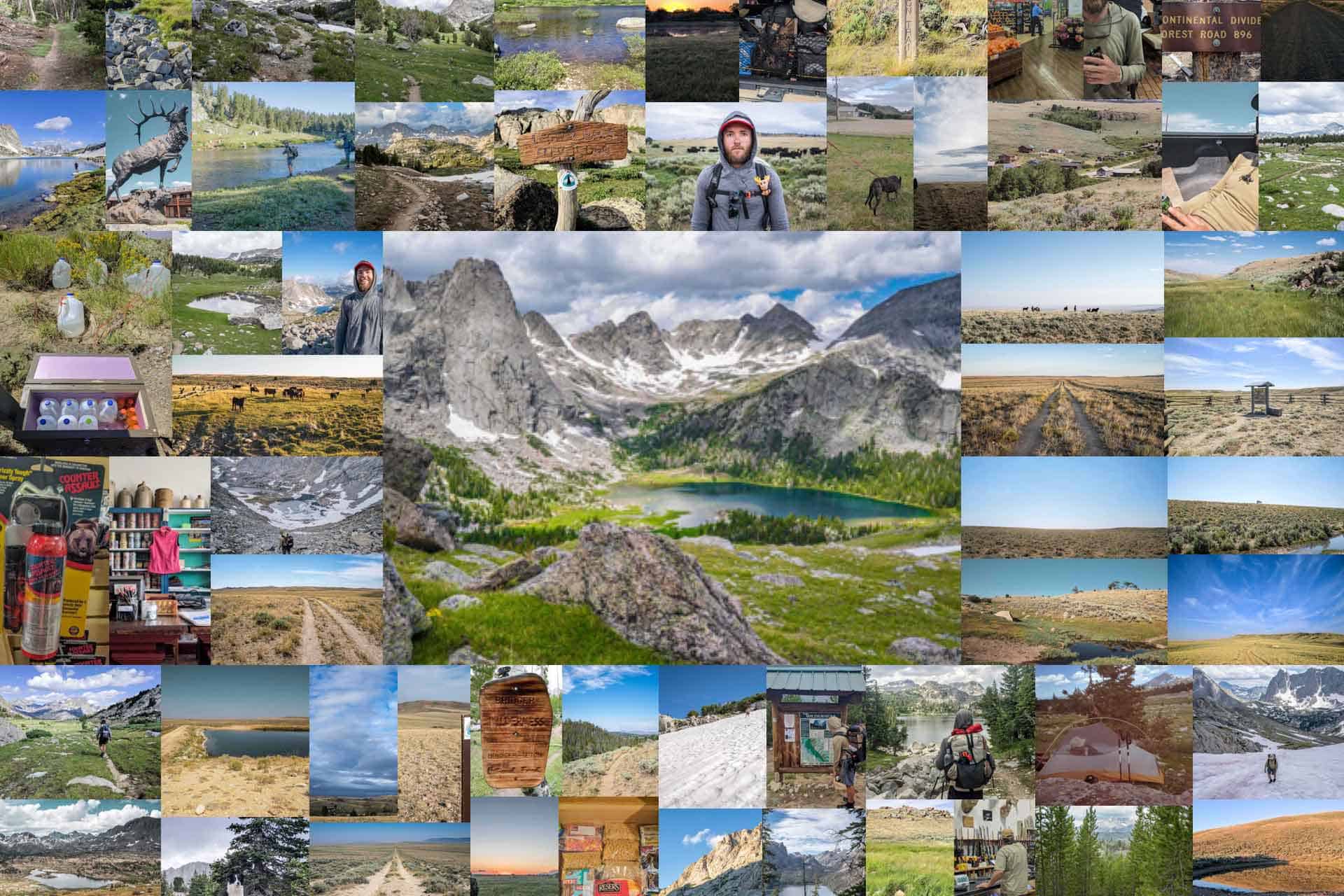
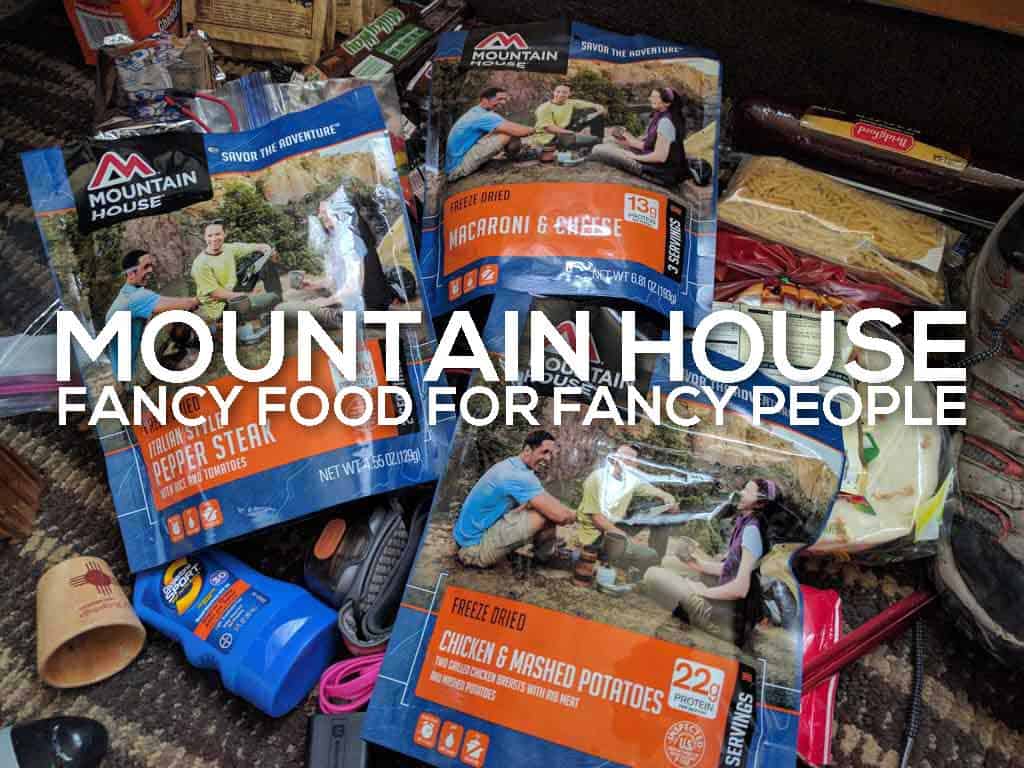
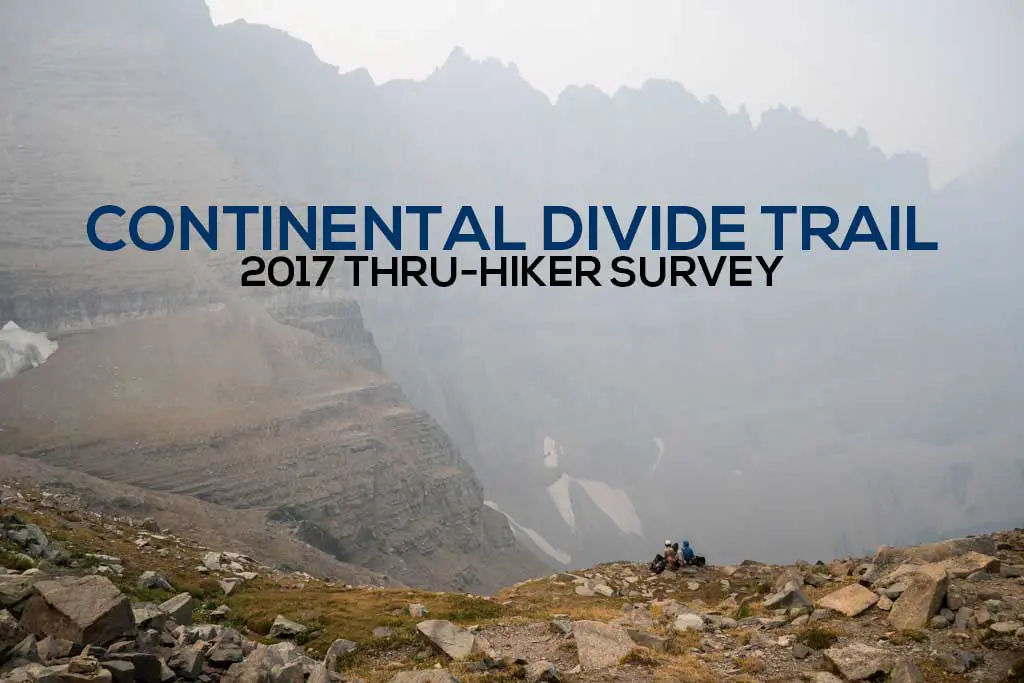
Now I where to resupply, but I don’t know if I have to use UPS or USPS? Could you answer this for New Mexico?
It generally depends on the location. Many locations will accept USPS, UPS, or FedEx. However, if you’re sending to a post office, you’ll want to send USPS. I know Doc Campbell’s and/or the Toaster House may have shipping restrictions. I would suggest contacting them directly to ask what the best method is.
Thank you for answering my question.
One more follow-up question. Will a box send from Silver City to Pie Town arrive there before I do (average hiking speed)? Or should I send it earlier?
It would be close but I think the box would make it. That said, since it would be close, personally, I would send it further ahead.
Thank you for the detailed information. I am a friend of one who will be starting the CDT soon. My questions are what is anything would you want in a care package? Is there something that hikers really miss and would love to get and maybe can’t find? Where is the best place to send to? I have been told some places charge a fee to pick up packages. Thank you for any answers.
I actually wrote a post describing just this:
https://www.halfwayanywhere.com/trails/thru-hiker-care-package/
As far as the best place to send it – the best place is the place they plan on going. Don’t make them take an unnecessary trip somewhere just to pick up a package.
I know you need the ads, but you’ve crossed the line with so many video ads that your great site with so much useful information has become so slow that it’s now useless!
I’m sorry the ads are impacting your experience, Jeff! I will look into this. In the meantime, I highly suggest using an AdBlocker plugin such as AdBlock.
Thanks for sharing this great insight to last years resupply thingies (that’s the technical term, right?)
Anyway, just a small note, 3rd alinea (counting that first sentence as 1) from the top, I’m guessing you’ve copy + pasted a wee bit too much from the PCT guide, or I’m going on a very different hike than I’ve been planning ;)
Beside that, thank you, looks fab and it’s really helping calm down some of my nerves that have been popping up over the past week. So big thumbs up from me!
Good call, Marti! Thank you for that – it’s been corrected :)